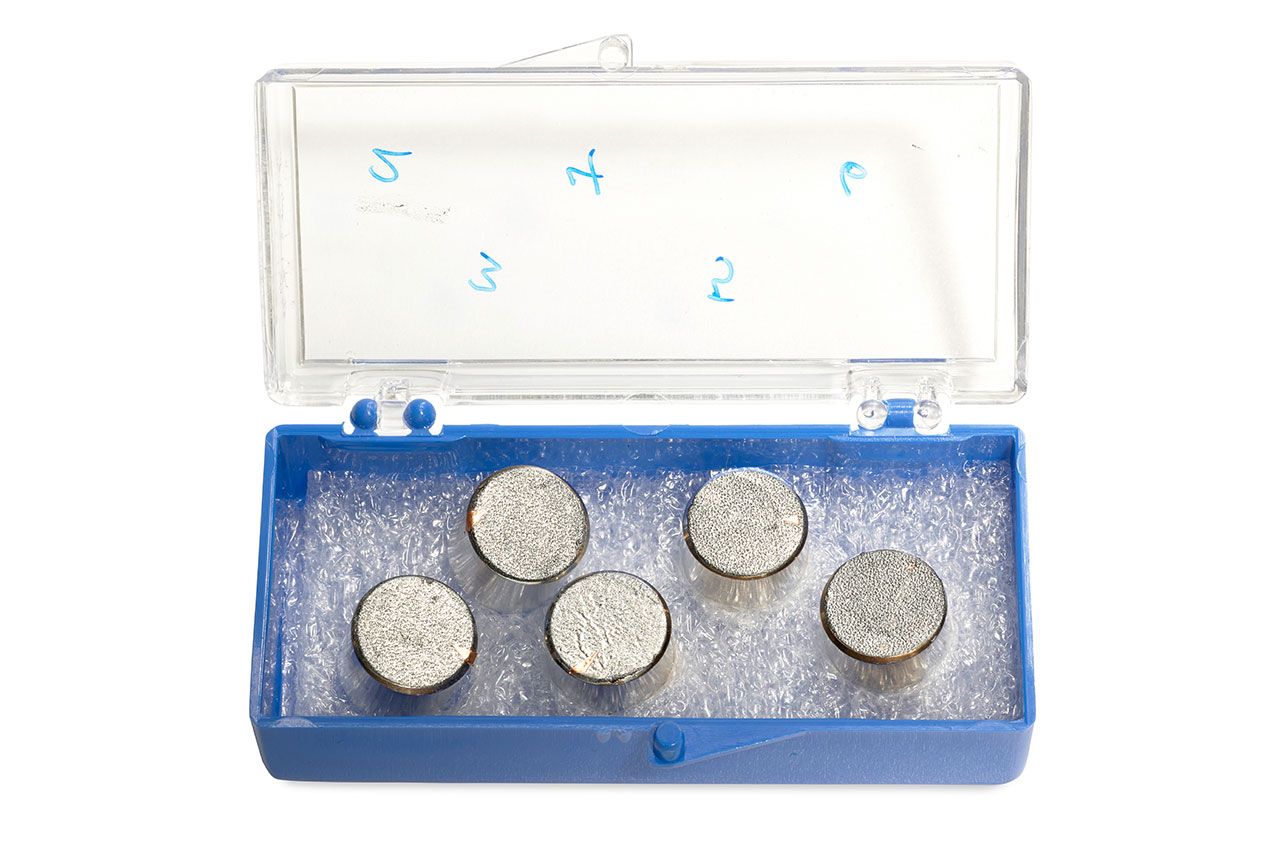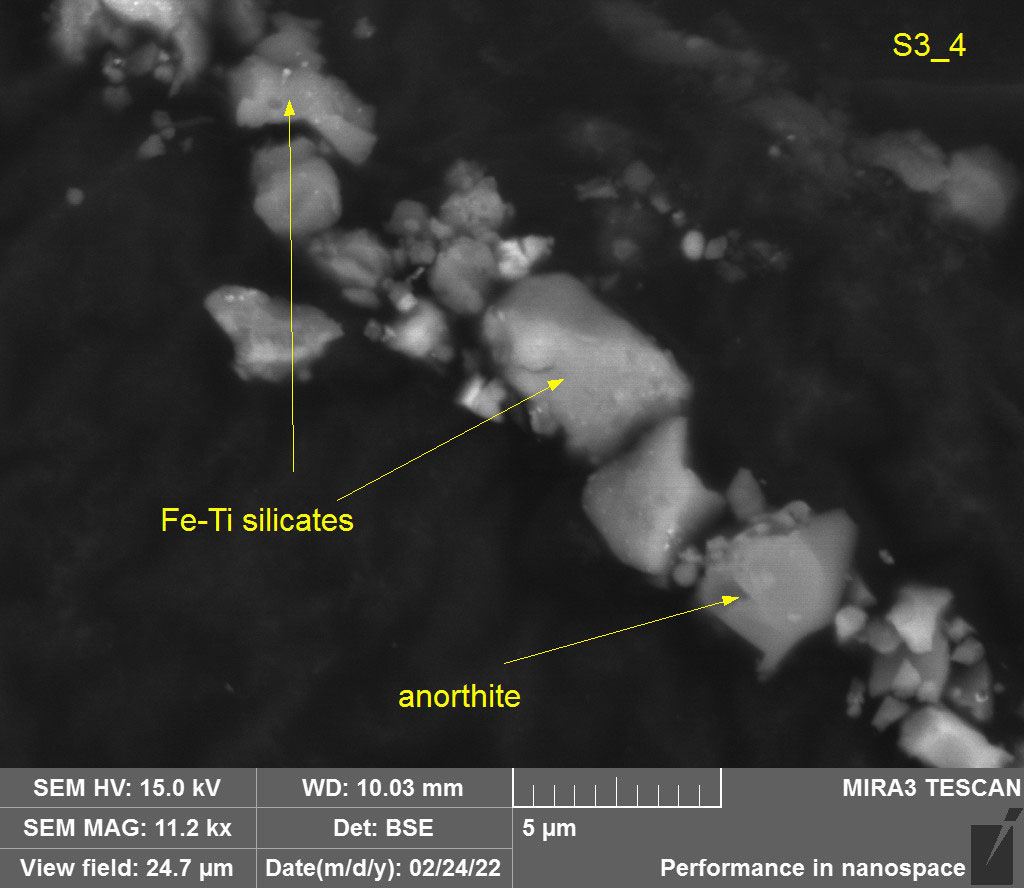Microscopic Apollo 11 moon dust sells for $500K at Bonhams auction
"A unique opportunity to own a NASA-verified piece of the Apollo 11 contingency sample."

A minuscule amount of microscopic moon dust has sold for half a million dollars after NASA determined that the particles are part of the first lunar sample collected by Apollo 11 astronaut Neil Armstrong.
Bonhams auctioned the Apollo 11 moon dust for $504,375 as part of its Space History Sale held Wednesday (April 13) in New York. The amount, which included the buyer's premium, fell short of Bonham's pre-auction estimate of $800,000 to $1.2 million.
"Lot 21 shown on your screens presents a unique opportunity to own a NASA-verified piece of the Apollo 11 contingency sample," said Ian Ehling, Bonhams' director of fine books and manuscripts, before opening the bidding at $220,000.
The Apollo program: How NASA sent astronauts to the moon
Ehling's hammer fell at $400,000 after receiving seven bids. The winning bidder was not identified.
The successful sale marks the end of a complicated and sometimes convoluted history for the moon dust since it arrived on Earth in 1969. The tiny samples, which were so small that Bonhams was unable to provide a total weight and cited their size in microns, were found in the seams of a bag used to hold the first lunar sample collected by an astronaut on the moon.
The specks of moon dust were used by a NASA curator to determine that the pouch, or "contingency sample return container decontamination bag," had flown on the Apollo 11 mission after it was sold at a government forfeiture auction in 2015. After NASA refused to relinquish the bag, a series of lawsuits filed by the auction winner resulted in the bag being ruled the buyer's property.
Breaking space news, the latest updates on rocket launches, skywatching events and more!
A subsequent legal dispute, which was settled out of court, ended with NASA also turning over the test samples after the bag was auctioned for $1,812,500 in 2017.
Bonhams sold the samples as NASA surrendered them, embedded in 10-millimeter-diameter black carbon tape affixed to five scanning electron microscope aluminum sample stubs. Independent testing conducted at Bonhams' request found that four of the five stubs held moon dust particles consistent with the contingency lunar sample collected by Armstrong. The fifth stub had lunar traces different from the other four, possibly due to a change in testing techniques.

NASA generally maintains that Apollo-recovered lunar material is a National Treasure and is not for private ownership. Narrow exceptions have been made for astronaut-retained mementos stained with lunar dust and two sets of international goodwill gifts. Even the moon rocks presented to astronauts as Ambassador of Exploration awards are in name only; the samples are on loan from the space agency.
The Apollo 11 contingency sample, which included 492 grams (17.4 ounces) of material finer than 0.4 inches (1 centimeter), as well as 12 rock fragments larger than 0.4 inches, remains in NASA's control, as does the majority of the 842 pounds (382 kilograms) of lunar rocks, core samples, pebbles, sand and dust that were brought back to Earth by the six Apollo missions that landed on the moon.
Legal sales of human-recovered lunar material are rare. In 2018, Sotheby's auctioned what was then the only government-certified sample of loose moon dust in private hands, three tiny pebbles brought back by the former Soviet Union's Luna 16 robotic probe in 1970. The grains, which weighed a total of about 0.2 grams (0.0007 ounces), sold for $855,000.
The same presentation, which was originally gifted to the widow of Sergei Korolev, the "Chief Designer" of the Soviet space program, was sold by Sotheby's in 1993 for $442,500. With inflation, the 2018 sale reflected an increase of about $87,500.
Other Apollo moon dust-stained equipment and tape-lifted lunar samples have been sold, but without the certification provided by NASA, making the Bonhams' samples unique.
Bonhams' Space History Sale included 22 lots in total, including artifacts from the launch of the world's first satellite Sputnik, astronaut autographs and photographs.
Follow collectSPACE.com on Facebook and on Twitter at @collectSPACE. Copyright 2022 collectSPACE.com. All rights reserved.

Robert Pearlman is a space historian, journalist and the founder and editor of collectSPACE.com, a daily news publication and community devoted to space history with a particular focus on how and where space exploration intersects with pop culture. Pearlman is also a contributing writer for Space.com and co-author of "Space Stations: The Art, Science, and Reality of Working in Space” published by Smithsonian Books in 2018.
In 2009, he was inducted into the U.S. Space Camp Hall of Fame in Huntsville, Alabama. In 2021, he was honored by the American Astronautical Society with the Ordway Award for Sustained Excellence in Spaceflight History. In 2023, the National Space Club Florida Committee recognized Pearlman with the Kolcum News and Communications Award for excellence in telling the space story along the Space Coast and throughout the world.

